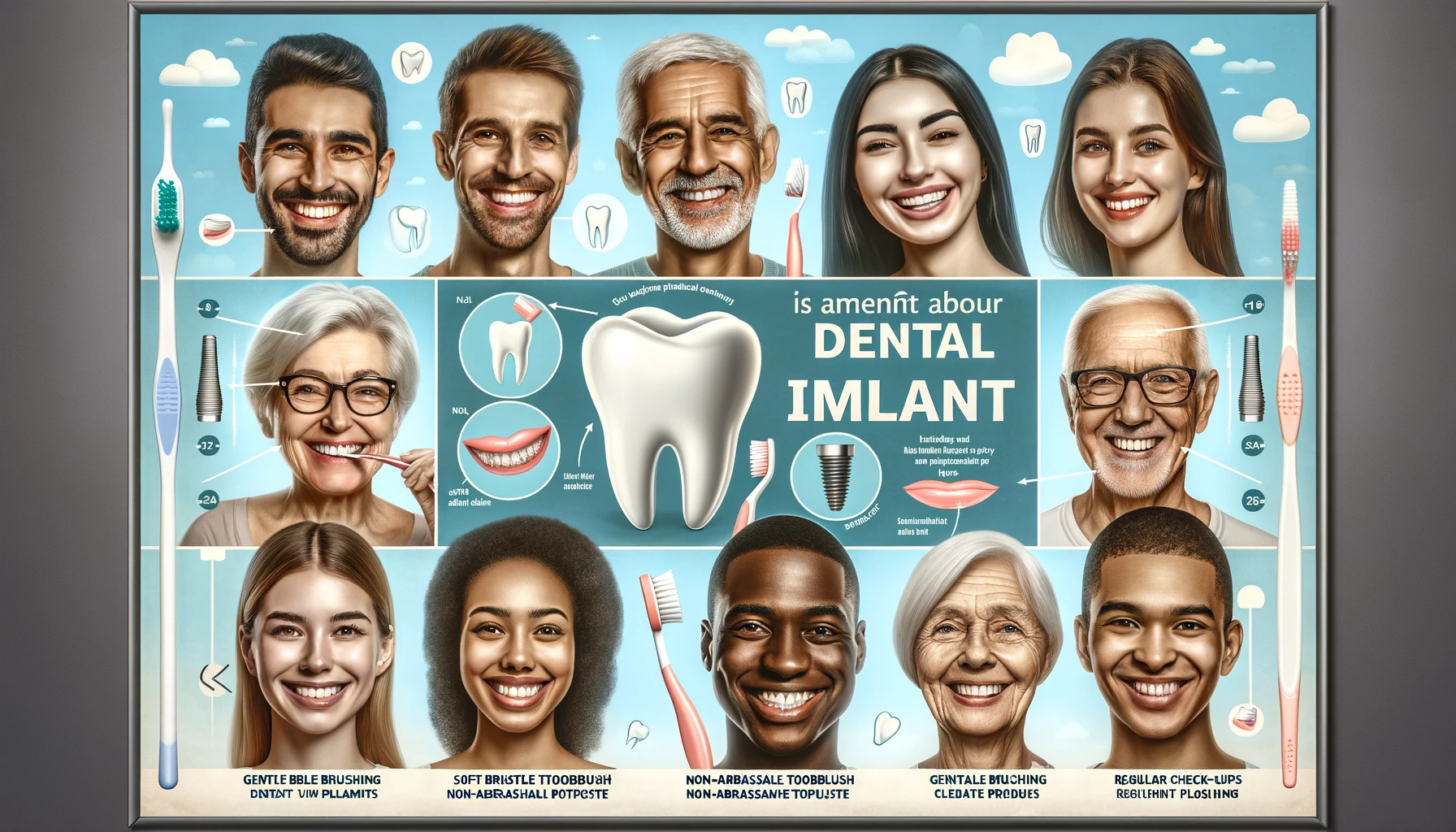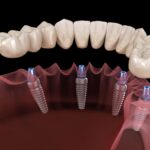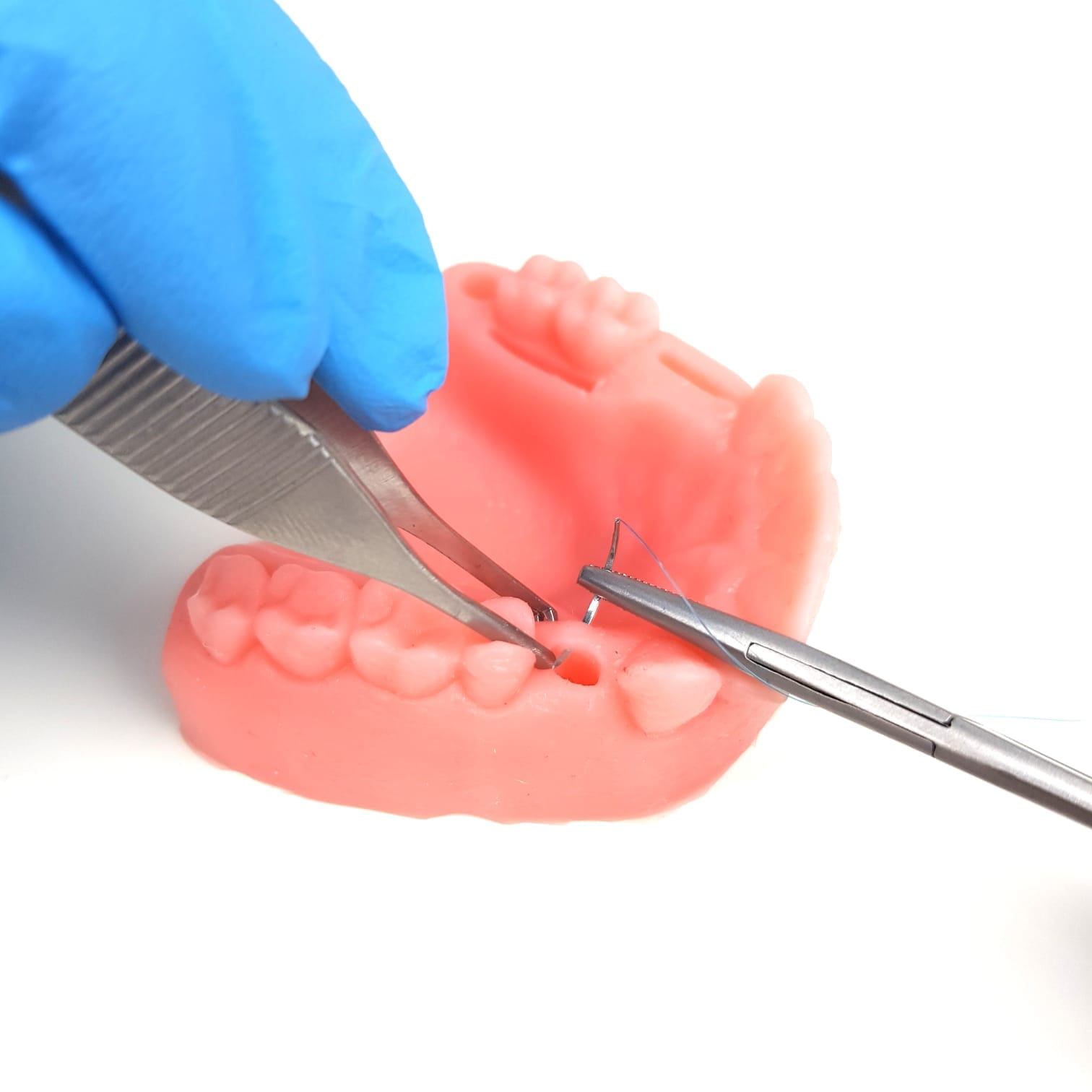Imagine biting into your favorite apple with confidence, smiling broadly in photos, or speaking clearly without worry. For millions of people worldwide, dental implants have made these simple pleasures a reality again. But how exactly do these modern marvels of dentistry work? Dental implants have revolutionized restorative dentistry, offering a permanent solution for missing teeth that closely mimics natural tooth function and appearance. In this comprehensive guide, we will break down the complexities of dental implants into easily understandable concepts, using real-world analogies to illustrate key points.
Understanding Tooth Structure and Implant Basics
Natural Tooth Anatomy
To grasp how dental implants work, it’s crucial to understand the structure of a natural tooth:
- Crown: The visible part above the gum line.
- Root: The hidden part that anchors the tooth in the jawbone.
- Periodontal Ligament: Connects the root to the bone, providing sensory input and shock absorption.
Components of a Dental Implant
A dental implant system consists of three main parts:
- Implant: A titanium or zirconium post that serves as an artificial root.
- Abutment: A connector piece that links the implant to the crown.
- Crown: The visible, tooth-like part that restores function and aesthetics.
Think of a dental implant as a high-tech artificial tooth root. Just as a natural root anchors a tooth in your jawbone, an implant provides a stable foundation for a replacement tooth.
The Dental Implant Procedure
Consultation and Planning
Your journey to a restored smile begins with a thorough consultation. During this initial visit, your dentist will:
- Evaluate your oral health.
- Take X-rays and 3D scans.
- Discuss your medical history and treatment options.
- Determine if you need any preparatory procedures, such as bone grafting.
Implant Placement
The implant surgery is a precise, carefully planned procedure:
- Local anesthesia is administered for your comfort.
- A small incision is made in the gum tissue.
- A hole is carefully drilled into the jawbone.
- The implant is inserted into the prepared site.
- The gum is sutured closed over the implant.
While this may sound intense, many patients report that implant surgery is less uncomfortable than a tooth extraction!
Osseointegration: The Magic of Bone Fusion
After placement comes a crucial waiting period called osseointegration. During this time, your jawbone grows around and fuses with the implant, creating a strong, stable foundation. This process typically takes 3 to 6 months.
Fun Fact: The term “osseointegration” was coined by Per-Ingvar Brånemark, who discovered this process while studying blood flow in rabbit bones!
Abutment and Crown Placement
Once osseointegration is complete, here’s what happens next:
- The implant is uncovered (if necessary).
- An abutment is attached to the implant.
- Impressions are taken for your custom crown.
- A temporary crown may be placed while your permanent one is crafted.
- Finally, your permanent crown is securely attached to the abutment.
Benefits of Dental Implants
Dental implants offer numerous advantages over traditional tooth replacement options:
| Benefit | Description |
|---|---|
| Aesthetics | Look and feel like natural teeth |
| Functionality | Restore full chewing power and clear speech |
| Comfort | No slipping or clicking like with dentures |
| Bone Preservation | Stimulate and maintain jawbone health |
| Longevity | Can last a lifetime with proper care |
| Confidence | Smile, eat, and speak without worry |
Long-term Oral Health Benefits
Beyond immediate improvements, dental implants contribute significantly to overall oral health:
- Prevent shifting of adjacent teeth.
- Maintain facial structure and prevent premature aging.
- Reduce the risk of gum disease and tooth decay in surrounding teeth.
Candidacy and Considerations
While dental implants are an excellent solution for many, they may not be suitable for everyone. Good candidates typically have:
- Healthy gums
- Sufficient bone density
- Good overall health
- Commitment to oral hygiene
Factors that may complicate implant treatment include:
- Smoking
- Uncontrolled diabetes
- Certain medications or medical conditions
Potential Risks and Complications
While dental implants have a high success rate (over 95% according to recent studies), it’s important to be aware of potential risks:
- Infection at the implant site
- Injury or damage to surrounding structures
- Implant failure or rejection
Your dentist will discuss these risks during your consultation and outline strategies to minimize them.
Innovations in Implant Technology
The field of dental implantology is constantly evolving. Recent advancements include:
UV Treatment: Pioneered by Dr. Takahiro Ogawa, this technique enhances the implant surface, promoting faster and stronger osseointegration.
3D Printing: Allows for the creation of custom implants and surgical guides for more precise placement.
Biomimetic Materials: New coatings mimic natural tooth structures, potentially improving integration and reducing healing time.
Comparing Dental Implants to Alternatives
When considering tooth replacement options, it’s essential to compare dental implants with other solutions such as dentures and bridges. Here’s how they stack up:
| Feature | Dental Implants | Dentures | Bridges |
|---|---|---|---|
| Permanence | Permanent | Removable | Semi-permanent |
| Bone Preservation | Yes | No | No |
| Natural Feel | Most natural | Least natural | Moderate |
| Longevity | 20+ years | 5–8 years | 10–15 years |
| Maintenance | Easy | Moderate | Moderate |
| Impact on Adjacent Teeth | None | Possible | Requires alteration |
Maintenance and Long-term Care
Caring for your dental implants is similar to maintaining natural teeth:
Brush twice daily with a soft-bristled toothbrush.
Floss daily using special floss or interdental brushes designed for implants.
Use an antimicrobial mouthwash.
Attend regular dental check-ups and professional cleanings.
Avoid smoking and limit hard or sticky foods.
With proper care, your dental implants can last a lifetime!
Cost Considerations and Insurance Coverage
The cost of dental implants can vary widely based on factors such as:
- Number of implants needed
- Necessity of preparatory procedures (e.g., bone grafts)
- Geographic location
- Dentist’s expertise
While initial costs may be higher than other options, their long-term value often makes implants a wise investment. Many dental insurance plans are beginning to offer coverage for implants—check with your provider for details.
Estimated Costs Table
Here’s an overview of potential costs associated with dental implants:
| Item | Estimated Cost Range |
|---|---|
| Single Dental Implant | $3,000 – $4,500 |
| Bone Grafting | $300 – $3,000 |
| Abutment | $300 – $500 |
| Crown | $1,000 – $2,500 |
Note: Prices can vary based on location and specific treatment needs.
Conclusion and Next Steps
Dental implants represent the gold standard in tooth replacement, offering a permanent solution that can significantly improve your quality of life. By understanding how dental implants work, you’re better equipped to make informed decisions about your oral health.
If you’re considering dental implants, here are your next steps:
Schedule a Consultation: Meet with an experienced implant dentist who can assess your individual needs.
Gather Your Medical History: Bring any relevant medical records or information about medications you’re taking.
Prepare Questions: Write down any questions you have about the procedure, recovery process, or long-term care.
Discuss Financing Options: Inquire about payment plans or financing options available through your dentist’s office.
Review Insurance Coverage: Check with your insurance provider regarding coverage for dental implants.
Remember that every smile is unique; therefore, your treatment plan should be tailored to meet your specific needs and goals. With proper care and expertise from qualified professionals, dental implants can restore not only functionality but also confidence—allowing you to smile freely once again!
Ready to Transform Your Smile?
Take our quick quiz to see if you might be a good candidate for dental implants or contact us today to schedule your personalized consultation!
Disclaimer: This article is for informational purposes only and does not constitute medical advice. Always consult with a qualified dental professional for personalized recommendations regarding treatment options.
References:
- American Academy of Implant Dentistry – aaid.com
- Journal of Oral Implantology – joionline.org
- National Institute of Dental and Craniofacial Research – nidcr.nih.gov















